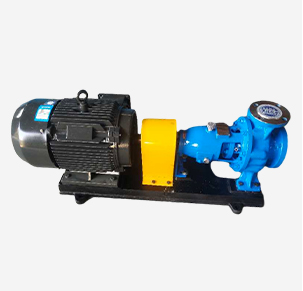Pashto
- Afrikaans
- Albanian
- Amharic
- Arabic
- Armenian
- Azerbaijani
- Basque
- Belarusian
- Bengali
- Bosnian
- Bulgarian
- Catalan
- Cebuano
- Corsican
- Croatian
- Czech
- Danish
- Dutch
- English
- Esperanto
- Estonian
- Finnish
- French
- Frisian
- Galician
- Georgian
- German
- Greek
- Gujarati
- Haitian Creole
- hausa
- hawaiian
- Hebrew
- Hindi
- Miao
- Hungarian
- Icelandic
- igbo
- Indonesian
- irish
- Italian
- Japanese
- Javanese
- Kannada
- kazakh
- Khmer
- Rwandese
- Korean
- Kurdish
- Kyrgyz
- Lao
- Latin
- Latvian
- Lithuanian
- Luxembourgish
- Macedonian
- Malgashi
- Malay
- Malayalam
- Maltese
- Maori
- Marathi
- Mongolian
- Myanmar
- Nepali
- Norwegian
- Norwegian
- Occitan
- Pashto
- Persian
- Polish
- Portuguese
- Punjabi
- Romanian
- Russian
- Samoan
- Scottish Gaelic
- Serbian
- Sesotho
- Shona
- Sindhi
- Sinhala
- Slovak
- Slovenian
- Somali
- Spanish
- Sundanese
- Swahili
- Swedish
- Tagalog
- Tajik
- Tamil
- Tatar
- Telugu
- Thai
- Turkish
- Turkmen
- Ukrainian
- Urdu
- Uighur
- Uzbek
- Vietnamese
- Welsh
- Bantu
- Yiddish
- Yoruba
- Zulu
Telephone: +86 13120555503
Email: frank@cypump.com
Dec . 07, 2024 07:59 Back to list
Calculating Efficiency and Performance of Slurry Pumps for Optimal Operation and Design
Understanding Slurry Pump Calculations
Slurry pumps are specialized devices designed to transport slurry mixtures, which typically consist of solid particles suspended in liquid. These pumps are widely used in various industries, such as mining, construction, and wastewater treatment, where the handling of abrasive materials is essential. The efficiency and performance of a slurry pump depend significantly on accurate calculations. Understanding these calculations is crucial for selecting the right pump for specific applications, ensuring optimal operation, and minimizing maintenance costs.
The Basics of Slurry Pumps
Slurry pumps function by creating a centrifugal force that moves the slurry through a piping system. The design of these pumps aims to handle the challenging properties of slurries, such as viscosity, density, and particle size distribution. Given the abrasive nature of many slurries, materials used in the construction of slurry pumps must be robust, often made from metals or heavy-duty plastics.
Key Calculations in Slurry Pumping
To effectively select and operate a slurry pump, several key calculations must be considered
1. Flow Rate (Q) The flow rate is the volume of slurry that must be pumped per unit time, typically expressed in cubic meters per hour (m³/h) or gallons per minute (GPM). Understanding the required flow rate is the first step in selecting the appropriate pump.
2. Total Dynamic Head (TDH) TDH is the total height that the slurry needs to be pumped, considering both vertical lift and friction losses in the piping. It is crucial to calculate the head accurately since it impacts the pump’s power requirements. The formula for TDH can be expressed as
\[ TDH = H_{vertical} + H_{friction} \]
Where \(H_{vertical}\) represents the vertical distance the slurry needs to be lifted, and \(H_{friction}\) accounts for the frictional losses due to the flow through pipes and fittings.
slurry pump calculations

3. Pump Efficiency Pump efficiency is a measure of how effectively the pump converts input power into hydraulic energy. It is calculated using the formula
\[ \text{Efficiency} (\%) = \frac{\text{Hydraulic Power}}{\text{Input Power}} \times 100 \]
Where hydraulic power can be calculated from the flow rate and the total dynamic head. Knowing the efficiency helps in determining energy consumption and operational costs.
4. Power Requirement The power required to drive the pump can be found using the formula
\[ P = \frac{Q \times \rho \times g \times TDH}{\eta} \]
Where \(P\) is the power in watts, \(Q\) is flow rate, \(\rho\) is the density of the slurry, \(g\) is the acceleration due to gravity, TDH is the total dynamic head, and \(\eta\) is the efficiency of the pump. This calculation ensures that the motor selected for the pump is capable of providing the required power.
5. Pump Sizing Once the flow rate and TDH are determined, selecting the right pump size is essential. Pump curves, provided by manufacturers, indicate the relationship between flow rate and head for different pump sizes. By analyzing these curves, engineers can ensure the pump operates in its best efficiency range, reducing wear and tear.
6. Abrasion and Wear Considerations The characteristics of the slurry, such as particle size, concentration, and hardness, will influence the choice of pump materials and design. It is essential to calculate the expected wear rates to select an appropriate pump with suitable materials that can withstand abrasive conditions.
Conclusion
Proper slurry pump calculations are fundamental to the success of any operation involving the transport of slurry mixtures. By accurately determining flow rates, total dynamic head, pump efficiency, power requirements, and pump sizing, engineers can select the most effective and efficient slurry pump for their specific applications. This not only ensures optimal performance but also extends the life of the equipment, reduces maintenance costs, and improves the overall efficiency of operations. Understanding the principles and calculations behind slurry pumping will empower professionals in various industries to make informed decisions, ultimately leading to more productive and cost-effective outcomes.
-
ISG Series Vertical Pipeline Pump - Chi Yuan Pumps Co., LTD.|High Efficiency, Low Noise, Durable
NewsAug.02,2025
-
ISG Series Vertical Pipeline Pump - Chi Yuan Pumps | High Efficiency, Low Noise
NewsAug.02,2025
-
ISG Series Vertical Pipeline Pump- Chi Yuan Pumps Co., LTD.|High Efficiency&Compact Design
NewsAug.02,2025
-
Heavy-Duty Mining Sludge Pumps - Wear-Resistant Slurry Handling
NewsAug.02,2025
-
Horizontal Split Case Pump with GPT-4 Turbo | High Efficiency
NewsAug.01,2025
-
ISG Series Pipeline Pump - Chi Yuan Pumps | High Efficiency, Durable Design
NewsAug.01,2025










